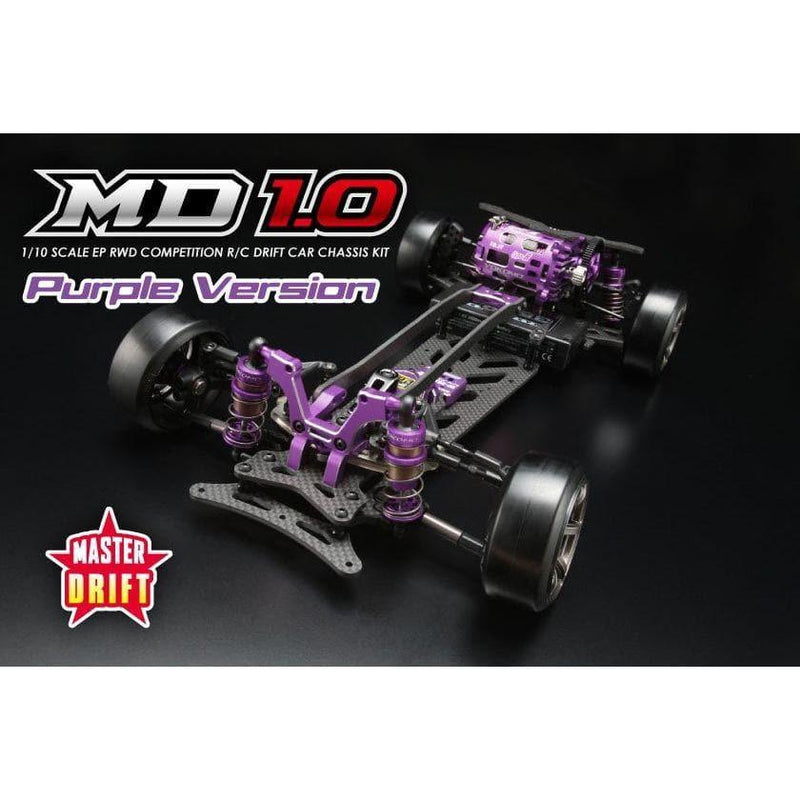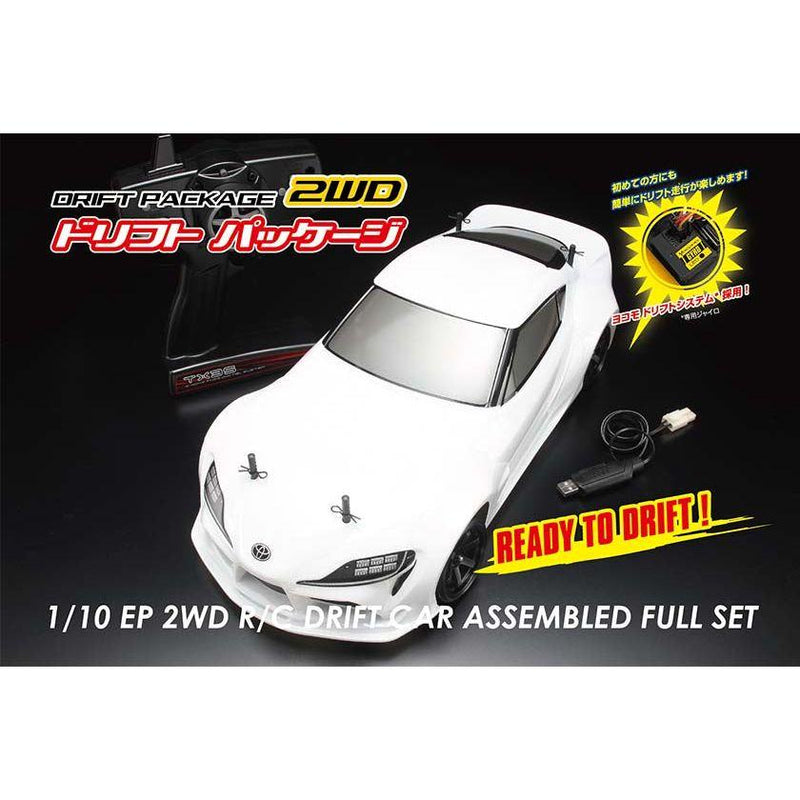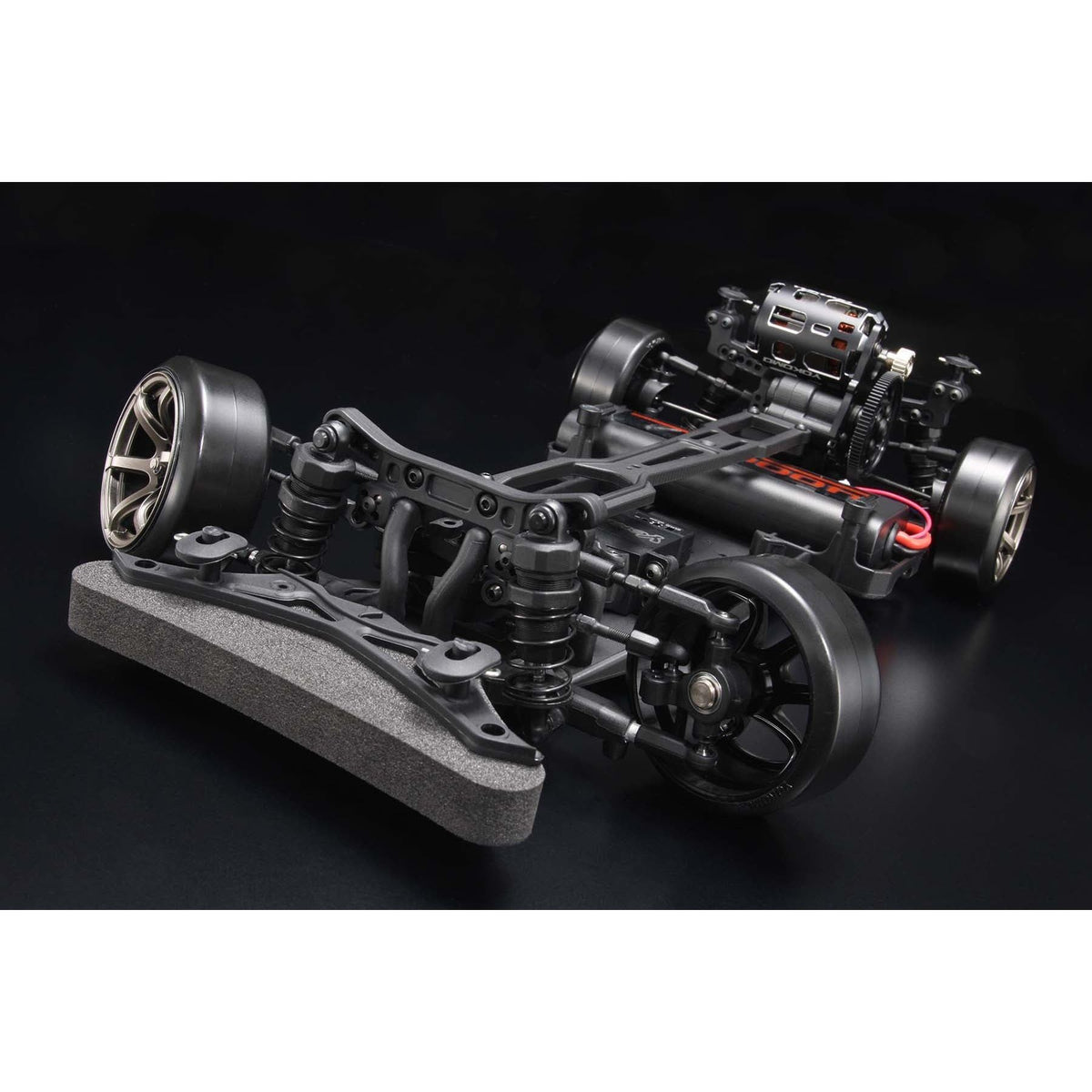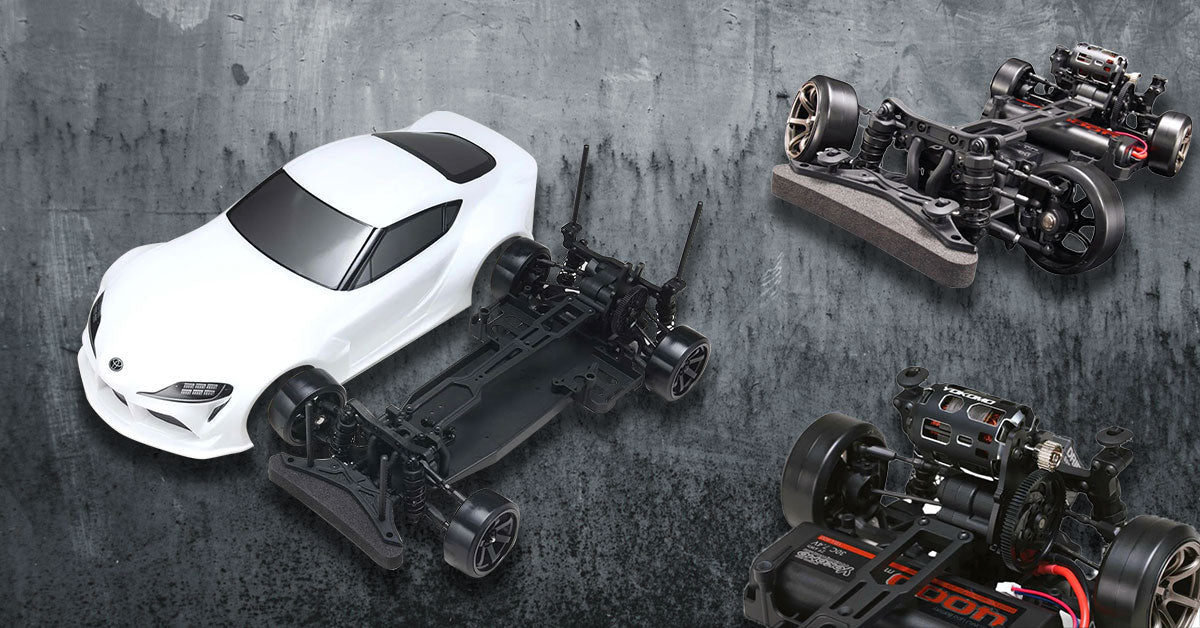Our Simple RC Drift Car Guide
The art of radio-controlled drifting with expert insights
Whether you're taking your first steps into the world of controlled slides or fine-tuning your technique, this simple guide will help you navigate the essential components of RC drifting. Let's get right into it!
| Key Takeaways | |
|---|---|
| Drivetrain Types | All-Wheel Drive (AWD), Rear-Wheel Drive (RWD) |
| Car Options | Ready-to-Run (RTR), Build-it-Yourself Kits |
| Key Components | Specialised tyres, tuned chassis, performance electronics |
| Skill Levels | Beginner to professional, with options for all experience levels |
| Popular Scales | 1/10, 1/12, 1/14, and 1/16 |
Choosing Your Drift Car Type

The foundation of your RC drifting journey begins with selecting between All-Wheel Drive (AWD) and Rear-Wheel Drive (RWD) configurations. Each drivetrain offers distinct advantages and challenges, catering to different skill levels and driving styles. Understanding the nuances of each type will help you make an informed decision and set you on the path to drifting success.
All-Wheel Drive (AWD)
AWD drift cars provide superior stability and are ideal for beginners. With power distributed to all four wheels, these cars offer:
- Easier initiation of drifts
- More forgiving handling characteristics
- Consistent performance across various surfaces
- Greater control in high-speed situations
- Smoother transitions between grip and drift
AWD systems allow for a more gradual learning curve, making them perfect for those new to RC drifting. The added traction helps maintain stability during slides, reducing the likelihood of spin-outs and allowing drivers to focus on perfecting their technique.
Explore our range of AWD drift kits to find your perfect match.
Rear-Wheel Drive (RWD)
RWD configurations deliver a more realistic drifting experience and are preferred by experienced drivers. These setups feature:
- Greater steering angles for dynamic drifts
- More challenging but rewarding control
- Closer simulation of full-scale drift cars
- Enhanced ability to perform technical maneuvers
- Increased potential for customization and tuning
RWD drift cars require more skill to control but offer a higher ceiling for performance and style. The rear-wheel power delivery allows for more precise control over the car's attitude during drifts, enabling experienced drivers to execute complex techniques and maintain longer, more controlled slides.
Check out our selection of premium RWD drift cars.
Essential Components for Peak Performance
Achieving optimal drift performance requires a harmonious blend of various components, each playing a crucial role in how your RC car handles and responds during drifts. Let's delve deeper into these essential elements:
Drift-Specific Tyres
The right tyres are crucial for achieving optimal drift performance. Our specialised drift tyres feature:
- Low-grip compounds for controlled sliding
- Unique tread patterns optimised for drifting
- Various hardness options for different surfaces
- Specially designed sidewalls for improved handling
- Balanced weight for reduced rotational mass
Drift tyres are engineered to provide just the right amount of grip, allowing for controlled slides while maintaining enough traction for steering input. The hardness of the tyre compound can significantly affect performance, with softer compounds offering more grip on smooth surfaces and harder compounds excelling on rougher tracks.
Chassis and Suspension Setup
A well-tuned chassis forms the backbone of any drift car. Key considerations include:
- Low centre of gravity for enhanced stability
- Adjustable suspension for fine-tuning handling
- Weight distribution optimisation
- Rigid construction to minimise flex during drifts
- Compatibility with various body styles for personalization
The chassis and suspension work together to provide the foundation for your drift car's performance. A low centre of gravity helps prevent rollovers during aggressive maneuvers, while adjustable suspension components allow you to fine-tune the car's response to your driving style and track conditions.
Weight distribution plays a crucial role in how your car initiates and maintains drifts. By adjusting the balance of weight between the front and rear of the car, you can influence its behavior during different phases of a drift, from initiation to transition and exit.
Explore our range of chassis components and tuning accessories to perfect your setup.
Electronics and Power Systems
The heart of any RC drift car lies in its electronics. High-performance components ensure precise control and power delivery:
- Brushless motors for smooth acceleration and top-end speed
- Programmable Electronic Speed Controllers (ESCs) for fine-tuned throttle response
- High-torque servo motors for quick and accurate steering
- Gyro stabilization systems for enhanced control during drifts
- Lightweight, high-capacity LiPo batteries for extended run times
Choosing the right electronics can make a significant difference in your drift car's performance. Brushless motors offer superior power-to-weight ratios and more precise control compared to brushed motors. Programmable ESCs allow you to adjust throttle curves and brake settings to match your driving style and track conditions.
Gyro stabilization systems have become increasingly popular in RC drifting, helping to maintain stability during high-speed drifts and allowing for more aggressive driving styles. These systems can be especially beneficial for beginners learning to control RWD drift cars.
Choosing Between RTR and Kit Cars

YOKOMO 1/10 Drift Package 2WD GR Supra Body (White) RTR Full Set

YOKOMO Rookie Drift RD2.0 RWD Drift Car Assembly Kit
When entering the world of RC drifting, one of the first decisions you'll face is whether to start with a Ready-to-Run (RTR) car or build your own from a kit. Both options have their merits, and the right choice depends on your experience level, time commitment, and desire for customization.
| Ready-to-Run (RTR) Cars | Kit Cars |
|---|---|
Benefits:
|
Advantages:
|
|
Convenience: Quick start, but may have limitations in performance and customization. |
Customization: Higher initial investment, but allows for maximum personalization and potentially superior performance. |
|
Ideal for: Beginners, those with limited time, or racers wanting a standardized setup. |
Ideal for: Experienced hobbyists, those who enjoy building, or racers seeking peak performance. |
|
Upgrade potential: Many RTR models offer room for future upgrades as skills progress. |
Learning curve: Steeper initial learning curve, but provides valuable knowledge for future maintenance and upgrades. |
Whichever path you choose, both RTR and kit cars can provide an excellent entry point into the world of RC drifting. Many enthusiasts start with an RTR model to learn the basics, then progress to building their own custom drift machines as their skills and interests develop.
For those interested in RTR models, check out our selection of ready-to-run RC drift cars. If you're eager to dive into building your own custom drift machine, explore our range of drift car kits and individual components.
Tuning Your Drift Car for Optimal Performance
Achieving the perfect drift setup is an ongoing process of experimentation and fine-tuning. As you become more familiar with your car and develop your skills, you'll want to adjust various aspects of your setup to match your driving style and the specific demands of different tracks. Here are some key areas to focus on:
Suspension Tuning
- Spring rates: Softer springs in the front and stiffer springs in the rear can help initiate drifts more easily.
- Damper settings: Adjust compression and rebound to control the car's weight transfer during drifts.
- Ride height: A lower ride height can improve stability, but be careful not to go too low and risk bottoming out.
- Camber angles: Negative camber can improve grip during cornering and help maintain drift angles.
Remember, suspension tuning is a delicate balance. Small changes can have a significant impact on your car's handling, so make adjustments incrementally and test thoroughly.
Differential Settings
The differential plays a crucial role in how power is distributed to the wheels, affecting your car's drift behavior:
- Front differential (for AWD): A more open differential can help initiate drifts, while a tighter diff can provide more steering on exit.
- Rear differential: A locked or very tight rear diff is common in drift setups, providing consistent power delivery to both rear wheels.
- Center differential (for AWD): Adjusting the center diff can alter the front-to-rear power distribution, affecting drift initiation and maintenance.
Weight Distribution and Balance
Optimizing your car's weight balance can significantly impact its drifting characteristics:
- Experiment with battery placement to adjust front-to-rear weight balance.
- Consider adding small weights to fine-tune handling.
- Pay attention to left-right balance to ensure consistent behavior in both directions.
For a wide selection of tuning accessories and tools, visit our online store.
Proper maintenance is crucial for keeping your RC drift car performing at its best. Regular care not only extends the life of your components but also ensures consistent performance on the track. Here are some key maintenance tips:
- Clean your car after each session: Remove dust and debris, paying special attention to moving parts and electronics.
- Check and tighten screws: The vibrations from drifting can loosen screws over time.
- Inspect your tires: Look for wear and replace when necessary. Rotate tires to ensure even wear.
- Lubricate bearings and moving parts: Use appropriate lubricants to reduce friction and wear.
- Check your electronics: Ensure all connections are secure and look for any signs of wear or damage.
- Battery care: Properly charge and store your LiPo batteries to maximize their lifespan and performance.
Regular maintenance not only keeps your car running smoothly but also helps you become more familiar with its components, aiding in future upgrades and repairs.
Frequently Asked Questions
What is RC car drifting?
RC car drifting is a motorsport discipline where radio-controlled cars are intentionally steered to slide sideways through corners, mimicking full-scale drift racing. It requires skill, precision, and specially-designed cars to execute controlled slides while maintaining speed and style.
What makes a RC drift car different from a regular RC car?
A proper RC drift car consists of several key components that distinguish it from standard RC cars:
- Specific low-grip tyres designed for sliding
- A chassis tuned for optimal weight distribution
- Adjustable suspension for fine-tuning handling
- High-performance electronics for precise control
- Often features a realistic body shell to mimic full-scale drift cars
How to get started with RC drifting?
Getting started with RC drifting involves several steps:
- Choose between an AWD or RWD drift car (AWD is recommended for beginners)
- Decide on an RTR model or a kit to build yourself
- Invest in a quality radio system for precise control
- Find a suitable practice area (smooth, flat surface)
- Join local RC drift groups or clubs for guidance and practice
- Start with basic techniques and gradually progress to more advanced maneuvers
What surfaces are best for RC drifting?
RC drifting can be done on various surfaces, but the most common are:
- Polished concrete: Offers consistent grip and is common in indoor tracks
- Asphalt: Good for outdoor drifting, though grip levels can vary
- Carpet: Specialized drift carpet is used in many indoor competitions
- Tile: Smooth tiles can provide an excellent drifting surface
The key is to have a smooth, consistent surface that allows for controlled slides.
Conclusion
RC drifting offers an exciting blend of skill, technique, and automotive enthusiasm. Whether you're just starting or looking to refine your abilities, the right equipment and knowledge are essential for success. As you progress in your RC drifting journey, remember that practice and patience are key to mastering this challenging yet rewarding hobby.
At Hearns Hobbies, we're committed to providing everything you need to excel in this thrilling hobby. From beginner-friendly AWD cars to high-performance RWD drift machines, we have the tools and expertise to support your RC drifting adventure.
Ready to start your RC drifting journey or take your skills to the next level?
Explore our comprehensive selection of drift car kits, specialised tyres, and tuning accessories. For personalised advice and support, don't hesitate to contact our team. Let's get sideways and experience the thrill of RC drifting together!
 is here! Shop now, pay later in 4 easy installments
is here! Shop now, pay later in 4 easy installments

